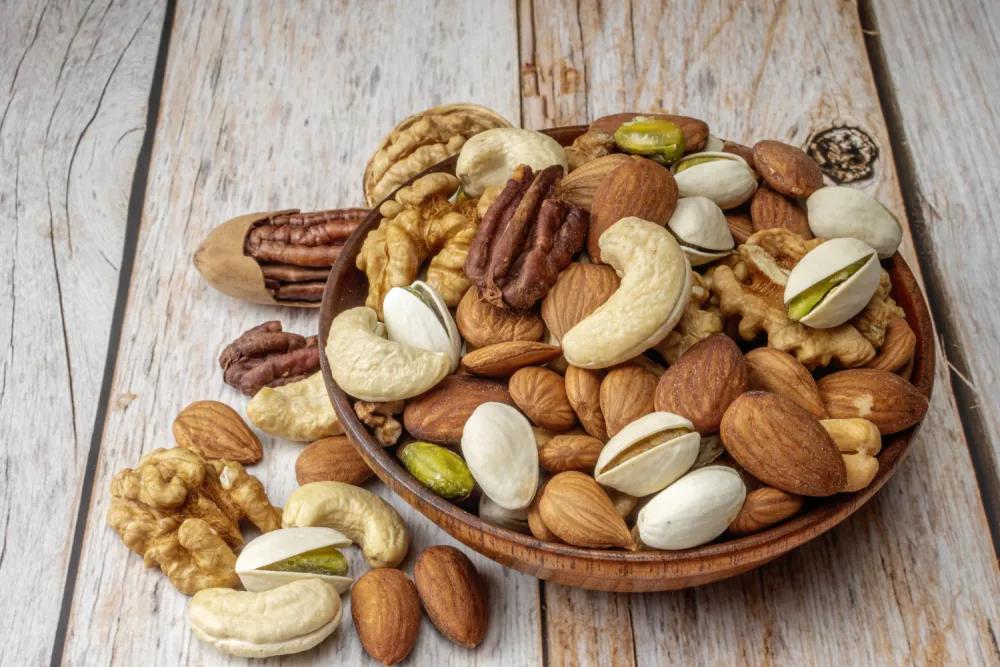
Many people who want to control their weight should have heard of meal replacement products, right?
Meal replacement is originally an enteral nutrient used in hospitals to provide nutrition to patients with poor digestive function, such as nasal feeding.
Now the meal replacements we talk about daily are mainly used to limit energy intake.

In today’s article, I will explain clearly what the meal replacement is, what kinds of types are there, and what to focus on when purchasing. It will be clear after you read it!
When buying a meal replacement, you have to look at the nutritional composition first
The European Union has strict regulations on meal replacement foods. The packaging of meal replacements must strictly indicate the calories, the content of various nutrients, and the proportion of major nutrients. And it must be marked that the doctor’s advice should be followed, and the maximum duration of use.
The meal replacement design must also be proportioned according to this ratio. Now the nutrient composition table on the meal replacement package is very clear. Please remember to check it carefully when you buy it.
Nutrient composition table on the packaging of a certain vegetable and fruit powder meal replacement package.
Common types of meal replacements
Reconstituted type
Reconstituted type: need to reconcile with water. In this way, you can drink more water, but it lacks the satisfaction of chewing. And the liquid stays in the stomach for a short time, which is not so anti-hungry.
Milkshakes
On the basis of protein powder, fat, carbohydrates, trace elements and minerals are added. Ensuring protein intake is very important. People who are lactose intolerant can choose legume protein products or lactose hydrolyzed products.
As long as the ratio of the three major nutrients (carbohydrate, fat, protein) is complete, this meal replacement can be started.
Vegetable and Fruit Powder

It mainly supplements dietary fiber, increases satiety and supplements prebiotics. The content of the three major nutrients is not enough and cannot be used as a single meal. You can drink a glass of milk while eating.
Power bar
The Snickers energy bar we are familiar with is a high-calorie version, while the meal replacement bar has lower calories, but it has the pleasure of eating and a better feeling of fullness.
However, these products are basically sweet at present, and they are also suffering for those who do not like sweets.
Proteins
The fitness crowd uses it a lot, and it may be more appropriate to call it a snack bar. The protein base should always be healthy.
Coarse grains
The high fiber content has advantages in this respect.

Nuts
Various nuts stick together, chew better, and have a high content of high-quality polyunsaturated fatty acids.
Grains and flours
It is the favorite of health pie, but the carbohydrate ratio is too high, and the glycemic index is also high, which is not suitable for diabetics. Supplement carbohydrates before exercise can be drunk, as a meal alone is very easy to starve.
When a meal replacement replaces a normal meal, the meal should be as nutritionally balanced as possible.
In addition, pay attention to ensure adequate drinking water, 1500-2000 ml a day, a small amount several times. You can drink warm water or light tea, not pure juice. The soup before and after meals can also add water, but be careful not to add too much salt.
How to eat meal replacement?
Meal replacement is mainly used to limit energy intake and can be used to replace one of the three meals. Hunger is its function. Meal replacements that are not hungry are hooliganism.
The goal of meal replacement is to quickly, conveniently and quantitatively provide the human body with the right amount of protein, fat, lower carbohydrates and other necessary nutrients.
The main advantage is quantitative. In daily diet, most consumers do not know how to count calories.

Studies have shown that after taking a 12-week meal replacement, the subject’s weight can drop up to 10.9 kg on average, and 85% of obese patients have reached the goal of a weight loss of> 5%.
There is no unanimous conclusion about which meal replacement meal should be more effective. Studies have found that eating meal replacements for breakfast has a more significant decrease in body weight, abdominal circumference, ghrelin and hunger scores throughout the day, and a significant increase in satiety scores. At the same time, blood sugar, insulin levels and insulin sensitivity were significantly improved.
Conversely, studies have shown that eating meal replacements for dinner is easier to accept and easier to control intake, which helps control nighttime insulin secretion and glycogen synthesis, thereby improving body fat distribution and metabolism in obese patients.
Research summary
1. It is definitely not enough to skip meals and only eat meal replacements. The weight loss effect of diet alone is not lasting, and it will also cause muscle and bone loss. Healthy weight loss is the reduction of fat (of course, muscle loss is inevitable, but it must try to protect).
2. It is completely okay to choose a meal replacement for breakfast or dinner. Just like milk and oatmeal, a reasonably-formulated meal replacement has the same meaning as formula milk powder and complementary food for infants and young children.
3. Meal replacement calories usually need to meet the calorie needs of a normal adult meal (300-500 kcal), and it can also meet the daily needs of normal people in terms of protein and micronutrients.
4. It is recommended that the time of taking meal replacements should not exceed 12 weeks. Current research is still uncertain about the effects of long-term use, and long-term inadequate energy intake may also have adverse effects on health. For the sake of insurance, it is enough to stop.
5. Meal replacements and health foods are only “assisting” weight loss. Do not exercise at all and rely on hunger and swallowing pills. This behavior pattern cannot be sustained in a long-term and safe manner.
Weight loss is a holistic lifestyle that involves exercise, diet, work and rest, and mentality. However, eating less and exercising more is not all right. Many people who are prone to obesity will have the problem of intestinal flora imbalance. This requires more research.
6. If it is pathologically obese, please consult a clinical dietitian to formulate a reasonable ratio of food types and calorie distribution in the three meals.
Comments